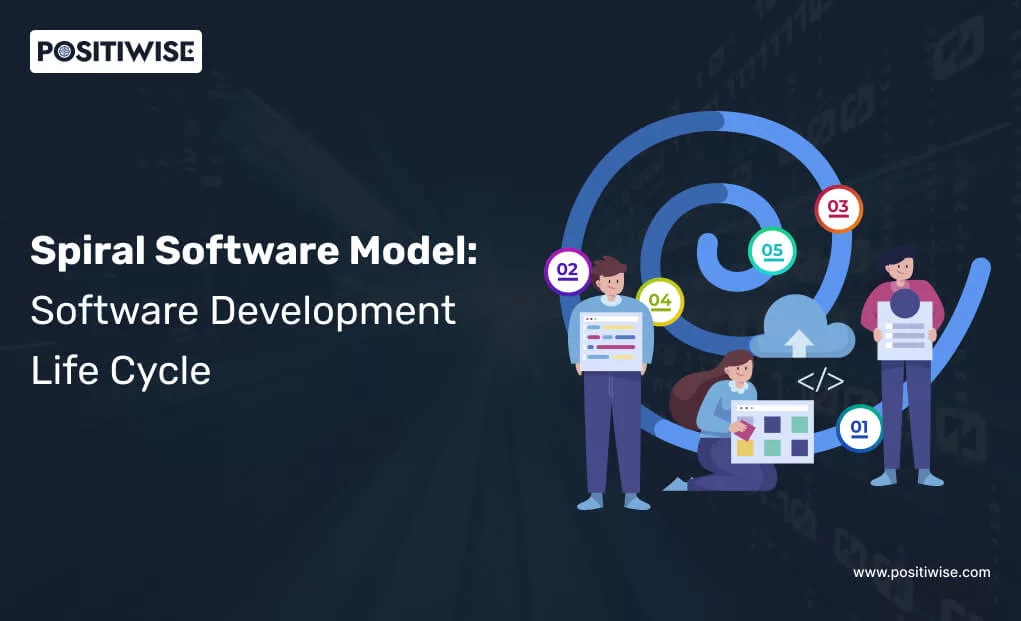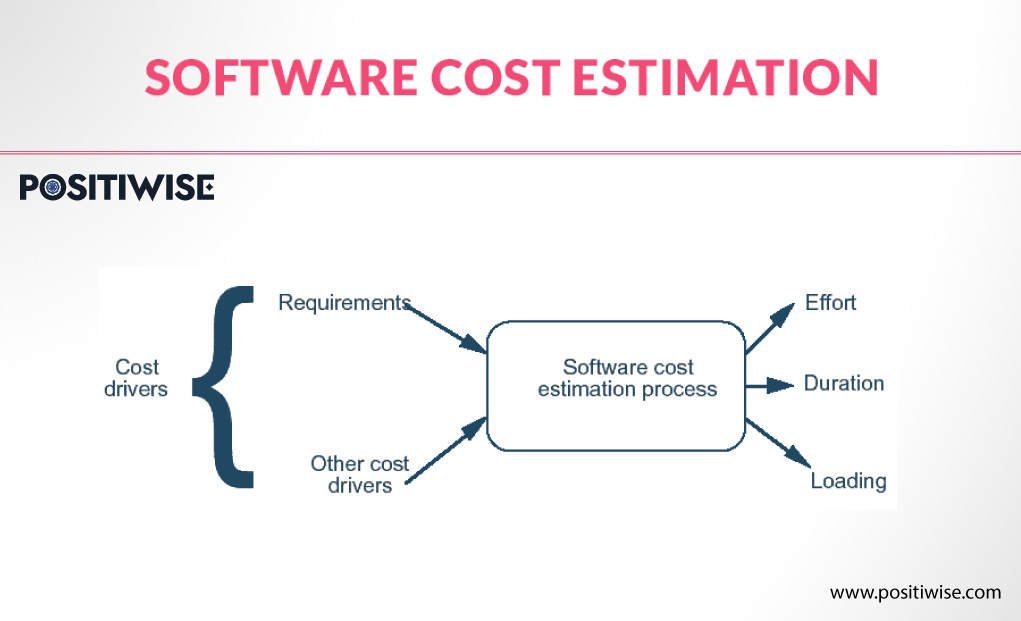Quick Overview:
A paradigm for the software development life cycle (SDLC) called the Spiral Model combines methodical phases of development with iterative development. In this blog, you will learn in detail about the features and definition of the Spiral Model in SDLC.
Introduction
Model Spiral One model used to arrange the workflow around a software project in the Software Development Life Cycle (SDLC). The spiral model SDLC, in addition to the Waterfall, Agile, Iterative, V-shaped, and Bing Bang models, attempts to reduce potential risks and raise the likelihood that the finished program will succeed tremendously. The question is why the Spiral SDLC Model distinguishes itself from the rest. What significant benefit does it carry with it? This article will examine the idea behind the model, go over its benefits and drawbacks, and talk about the situations in which it works best.
Understanding What Spiral Model Is?
A model in spiral form The Software Development Life Cycle (SDLC) is a systematic approach to software development that combines the Iterative and Waterfall models. To better understand Spiral’s operation, let’s first examine the Waterfall and Iterative models.
Software development is done linearly using the waterfall model, with each step needing to be completed before moving on to the next step. Furthermore, the scope is established during the requirements stage before the project’s launch.
Therefore, the Spiral Model of Software Development Life Cycle (SDLC) makes software development more adaptable for projects with rigid beginning scopes by taking Waterfall’s progressive approach and the Iterative model’s repeated nature. It also makes handling hazards possible at any point.
What Are the Phases of the Spiral Model?
The methodology begins with the team defining and building a portion of the software product to eliminate the shortcomings of the waterfall process. After that, the product is progressively brought to life through phases and iterations with defined tasks and due dates. Teams may effectively and conveniently evaluate risks at their earliest stages using the iterative paradigm. Because of this, the team is unlikely, if ever, to encounter hazards in the future. Let’s now examine the Spiral Model SDLC in more detail. Every stage of development consists of four stages.
Organising
The team must now examine the demands to determine their viability. The team begins planning the development step if they are. The actual software development and testing are the main priorities of this phase. Programmers develop an architectural design, design modules, design the actual product, and complete the design in this step. It transforms the proposal from the prior two stages into a functional piece of software.
Examination of Risks
Here, the team carefully considers potential issues that could arise at the specified stage and potential solutions for such difficulties. This stage extensively and meticulously examines the hazards associated with each potential fix. This is done to find flaws or weaknesses, such as software vulnerable to cyberattacks or overspending. Every danger is addressed with the most effective plan of action.
Progress
After everything has been planned and thought through, the stage specialists work. The newly created software’s performance is assessed and tested at this stage. Programmers examine their previous work before beginning a new project to gain knowledge. They can continue the cycle by starting to plan for the following phase after this one. The software business eventually distributes it onto the market.
Assessment
Following the completion of the stage, the customer evaluates the outcome and gives the team input. This stage examines and justifies the action taken. In addition, if the intended version fails, alternate alternatives are identified.
The team traverses each phase at every development step: development, prototyping, and testing. Throughout the engineering process, this is a repeated procedure that is done several times. The SDLC Spiral Model differs from previous models in this way.
Why is the Meta Model Named after the Spiral Model?
The Spiral model, which is a Meta-Model, includes all other SDLC models. The Iterative Waterfall Model, for example, is represented by a single-loop spiral. The spiral model incorporates the Classical Waterfall Model’s step-by-step methodology. Additionally, it employs the Prototyping Model to minimize risks by starting each step by creating a prototype. Furthermore, because the spiral’s iterations may be viewed as stages of the system’s overall history, the spiral model lends credence to evolutionary theory.
Lastly, an evaluation of the test findings for the most recent version is done in the fourth quadrant. Before moving on with a new build, programmers may pause and evaluate what worked and what didn’t, thanks to this study. Planning for the following phase starts after this quadrant, and the cycle is repeated. Upon reaching the summit of the spiral, the program is ultimately implemented within its designated market.
Example of a Spiral Model: Understanding Who Uses It?
The fact that Microsoft utilized the SDLC Spiral model to create early iterations of Windows is among its most intriguing features. The approach was also used in the creation of the Gantt chart software. As previously mentioned, the concept facilitates prototypes’ rapid and meticulous creation. Spiral becomes a good choice because the gaming business primarily depends on early game versions. Using this strategy, game production businesses may quickly get input from their clientele and create a playable version that can be developed into an equally playable game more quickly.
In the early works, the spiral model was initially called the “process model.” This also applied to other methodologies like waterfall, incremental, and prototyping. However, the characteristics of the risk-driven spiral model for combining different process systems are already in place. Thanks to the risk-driven subsetting of the spiral model measures, the model may be adapted in any suitable combination of an automatic transformation-oriented, detailed, or another method for creating software.
Explore the Pros and Cons of the Spiral Model in SDLC
Because it incorporates all other SDLC models, the spiral model is often called the “Meta Model.” Its numerous loops in its diagrammatic form give it a spiral appearance, which is why it is named a spiral. This model is capable of managing hazards.
| Pros of Spiral Model in SDLC | Cons of Spiral Model in SDLC |
|---|---|
| The Spiral Model strongly emphasizes ongoing feedback and improvements to satisfy customers. | The intricate planning and execution involved in the development process make managing and tracking several iterations difficult. |
| The spiral paradigm facilitates ongoing development since each cycle builds on prior knowledge and increases proficiency. | If modifications aren’t well managed, the iterative model’s ability to expand the project’s scope might result in delays and increased costs. |
| This proactive strategy increases the success rate of initiatives as a whole. | Ignoring risk management in the future might cause problems. |
| It strongly emphasizes risk assessment and management at every stage of the project, making it possible to identify and address possible problems early on. | Complete documentation requires a lot of time and resources, mainly if good project management isn’t included from the beginning. |
| The Spiral Model minimizes interruptions from shifting needs or unanticipated events by allowing for flexibility and modifications during development. | Teams may occasionally need to switch up their tasks every round, making it challenging for everyone to cooperate. |
| Prototyping allows developers to validate design decisions early in the Spiral Model cycle. | The Spiral Model works well for big projects that need flexibility but only for smaller projects with tighter budgets. |
| This increases overall efficiency and lessens the need for rework later in development. | Maintaining user involvement in every phase can be easier with active participation, which might result in inadequate input and subpar results. |
Why is the Meta Model Named the Spiral Model?
The Spiral Model offers a systematic way to recognize and reduce risks at every stage of the software development life cycle, known as a “meta-model.”The four phases of the model are planning, risk estimation, engineering, and assessment. Each phase is carried out cyclically, building on the one before it. Because of this, it’s a very flexible framework that may be applied to direct and modify any software development procedure.
Large-scale and sophisticated software projects frequently use the Spiral Model because of its flexibility and emphasis on risk management. Software development teams may use it to detect any hazards early on and modify the creation process accordingly, resulting in a product of more excellent quality. Teams may improve productivity, lower risk, and make sure their software meets user demands by using the Spiral Model throughout their software development process.
Understanding the Uses of The Spiral Model
Using this architectural diagram, you may understand the phases involved in the Spiral Model more straightforwardly. The Spiral Model repeatedly goes through planning, designing, building, and testing, making minor adjustments at each stage.
It is crucial to remember that the Spiral Method necessitates meticulous preparation and implementation. A team capable of skilfully navigating each spiral while upholding a long-term goal is needed. It also necessitates dedicating enough resources for every cycle, which can entail data analysis, plan modifications, and recurrent testing.
Spiral Model Utilised in Web-Based Software
The entire process is divided into several modules under the spiral model. Consequently, the buyer receives the module. It is ready for use right away. If the client needs to alter, the suggested model is also advantageous. It is simple to apply in the process of development. Develop your project gradually.
The quadrant devoted to requirement identification and comprehension is where the phases start. Every goal should be clarified and examined, and the phase’s ultimate aim should be established. Finding backup plans is crucial in case the tried-and-true version doesn’t work out.
After that, risk analysis needs to be done on every potential solution to identify any flaws or weaknesses, such as going over budget or having software parts that might be vulnerable to cyberattacks. Next, each risk must be addressed utilizing the best possible action plan.
Model Application in the Development of Mobile Applications
The conventional Prototype and Spiral Model are combined in the Mobile Application Development Life Cycle (MADLC). Aspects including cross-platform development, user interaction, and memory utilization must be carefully considered while developing mobile applications (as little memory space is a typical concern in mobiles).
The spiral approach allows for incremental product releases, iterative product improvement at each spiral stage, and prototype construction at every stage. The model’s capacity to manage unanticipated hazards after the project has started is its most crucial characteristic; building a prototype makes this possible.
Conclusion
In this approach, every spiral may be considered a loop, a distinct spiral model growth process. The intermediate phases of the spiral model consist of four activities: planning, risk analysis, engineering, and evaluation. These activities are repeated for every loop.
The Spiral Model is a very effective and adaptable development method in software engineering.
It supports programmers in making specific adjustments and getting input so everyone is satisfied with the result. Through its emphasis on risk management and constant enhancement, the spiral model aids in mitigating possible problems and produces high-quality software.
Expert in Marketing Strategy and Brand Recognition
Jemin Desai is Chief Marketing Officer at Positiwise Software Pvt Ltd, he is responsible for creating and accelerating the company’s marketing strategy and brand recognition across the globe. He has more than 20 years of experience in senior marketing roles at the Inc. 5000 Fastest-Growing Private Companies.






